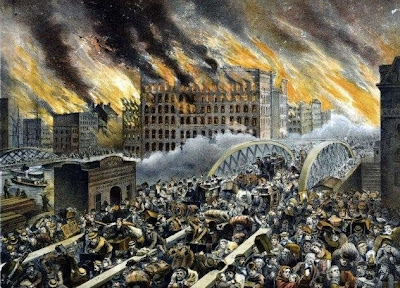Peshtigo And Great Chicago Fires
On October 8, 1871, the Midwestern United States experienced an enormous firestorm that burned 6,100 square kilometres (2,300 sq mi) of land around Peshtigo, Wisconsin. The event is the deadliest fire in US history and killed 1,500 to 2,500 people. On the same day, the United States experienced the Great Chicago Fire, the Port Huron Fire, the Holland Fire, and Manistee Fire.
The 1871 firestorm was caused by strong winds and forest fires. After gaining enough energy, the blaze quickly developed into a massive wall of fire that reached a speed of 160 kph (100 mph) and produced tornado-style winds. The fire was so hot that sandy beaches were turned to glass, and people were incinerated. The fire jumped over the waters of Green Bay and destroyed 12 separate communities in the area. It tossed rail cars and houses into the air and left thousands of people with nothing.
Some 400 kilometres (250 mi) south of Peshtigo, Wisconsin, the city of Chicago experienced one of its largest fires in history on October 8, 1871. The Great Michigan Fire also started on October 8th and burned a large number of cities in the area. When looking over the destruction, some have come to wonder what triggered the fires.
The coincidence has caught the attention of a group of researchers who have proposed that the fires were all started when Comet Biela broke up over the Midwest. Meteorites are not known to start or spread fires, as they are cold to the touch when reaching the ground. However, it has been suggested that the methane in comets could potentially ignite if the object is large enough and hits a dry patch of land that has experienced forest fires. Others have suggested that an airburst over a forest fire–riddled area could cause a massive firestorm. On October 8, 1871, people all over Wisconsin reported seeing a series of spontaneous ignitions, balls of fire, blue flames, and a lack of smoke usually representative of a firestorm.




Comments
Post a Comment